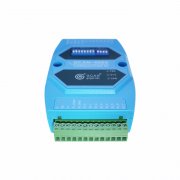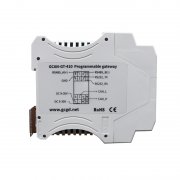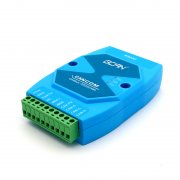Common after-sales questions and answers of USBCAN analyzer
Guangcheng Technology USBCAN Analyzer is a professional analysis tool used to install, develop, test, maintain, and manage CAN-bus networks. It is versatile, powerful, and uses a USB interface. It has the characteristics of small size, plug and play, and is very suitable for Collecting data on site and detecting network status is also the best choice for users of portable systems. Today I want to share with you the common after-sales questions and answers of the USBCAN analyzer. Let's take a look at it with the editor!


Question one:
The board developed by myself, the baud rate is 250kbps, why can't it connect with your USBCAN analyzer?
Answer:
In the case of checking the wiring and terminating resistance, it is usually because the baud rate is set incorrectly, which prevents normal communication. The value of the baud rate is mainly determined by factors such as the crystal size, timer value, and sampling point settings. You can choose to automatically recognize the baud rate function, from 300kbps to 150kbps, detect whether the baud rate of your development board is 250kbps.
Question two:
The USBCAN analyzer is connected to the CAN network, there is no data, and the oscilloscope cannot see the data.
Answer:
Please check whether your communication baud rate, terminal resistance and wiring are correct. The first is to confirm whether your wiring is CAN high connect CAN high, CAN low connect CAN low. The second is the termination resistance. The standard CAN bus termination resistance should be around 60 ohms. You can use a multimeter to measure whether the resistance between CAN high and CAN low is too large or too small. Non-standard resistance configuration will cause communication failure. The third is the choice of communication baud rate, just like the frequency of the radio, devices with the same CAN bus baud rate can communicate with each other. If you do not know what the baud rate of the bus is, you can use the ECANtools software to perform "automatic baud rate recognition" to find the baud rate on the bus while ensuring that the wiring and termination resistance are correct. In addition, you also need to separately check the voltage value of the CANH and CANL interfaces you measured to ground. If it is higher than 5V, it is not a CAN bus interface. Please check the data to confirm.
Question three:
Connected to my board, no response, how to determine if the USBCAN analyzer device is broken?
Answer:
Hello, our equipment is industrial grade, there is no problem to use in many harsh working conditions. You can perform a self-check on the device by the following methods: Do not wire (hang in the air) at the CAN end of our device, enter the ECANtools software to select the "spontaneous self-receiving" mode, and then click the "send" button to observe whether the interface is immediately received The data. If it is received, it proves that there is no problem with the device. You can use it with confidence. Then you need to check the wiring, termination resistance and baud rate in sequence. After confirming that the wiring and termination resistance are correct, you can use the ECANtools software to perform "automatic baud rate recognition" to find the baud rate of the CAN communication board.






